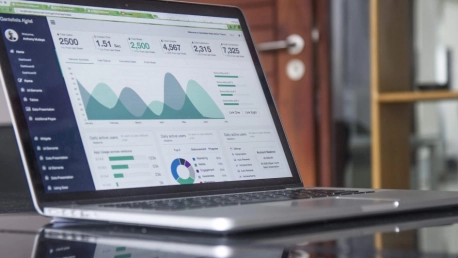Pay-per-click (PPC) advertising remains one of the most powerful tools in the hands of digital marketers, offering a targeted and measurable way to reach their audiences.
As the summer of 2023 comes to an end, the landscape of advertising continues to evolve, demanding a refined set of strategies to drive success and outpace competitors.
So, how can you fine-tune your PPC campaigns to thrive in this shifting environment?
In this article, you’ll find some of the best practices you should consider and implement in the following months.
Adapt to Voice Search Trends
Voice search is no longer a futuristic concept. It’s a prominent feature of today’s digital interactions, and about 27% of internet users are leveraging this tool on a regular basis.
With the proliferation of voice-activated devices and virtual assistants, optimizing your PPC campaigns for voice search is crucial for better engagementing with potential customers.
Long-tail keywords and conversational phrases are key components to align your ads with how people speak and search in a voice-driven world.
Leverage AI and Automation
Artificial Intelligence (AI) technologies are sparking a revolution in PPC advertising by enhancing targeting accuracy and campaign management efficiency.
The value of AI also comes from its capability to automate tasks, which according to Statista is the most effective digital marketing strategy after content marketing.
Last but not least, AI-driven tools allow you to analyze vast amounts of data in real time, enabling you to make informed decisions on bid adjustments, ad placements, and audience targeting.
Prioritize Audience Targeting
Gone are the days of one-size-fits-all advertising. In 2023, personalization has become more paramountimportant than ever.
Successful marketers utilize audience segmentation based on demographics, interests, and behaviors to tailor their ads to specific customer segments and improve the performance of their campaigns.
Not only does this strategy boost relevancy, but it also maximizes the value of your audiences and enhances your ROI by connecting your company with users who are more likely to convert.
Invest in Video Ads
As video content continues to dominate online platforms, your PPC strategy should not shy away from this powerful element.
For instance, tailored video ads arecan result more trustworthy and more effective in sending the right message to customers while also being demographically precise—ultimately creating a sense of trust between brand and customer..
Capitalize on the popularity of video content by creating engaging and informative ads that resonate with your target audience.
Platforms like YouTube, along with social media, offer robust opportunities for video ad placements.
Optimize Landing Pages
A well-crafted PPC ad is only half of the story. The conversion happens on the landing page where users are directed to.
Imagine clicking on an advertisement showcasing a captivating limited offer and being redirected to a busy homepage with no clear path to follow. You might feel confused or even frustrated. You will be very tempted to just abandon the website.
To avoid a similar scenario, make sure your pages align perfectly with the ad’s message and provide a smooth navigation experience. Your goal should be to lead the prospect to the destination promised in your ad.
Indeed, it’s been shown that message matching is critical for a winning PPC strategy, and poor execution can spell doom for your campaign.
Fast loading times, compelling visuals, and clear calls-to-action (CTAs) are also other essential components to drive conversions.
Monitor and Adjust Regularly
PPC success hinges on continuous monitoring of what’s working, and fine-tuning what’s not, accordingly. That’s why you should analyze performance metrics like click-through rates (CTR), conversion rates, and Quality Score regularly.
Use this data to identify trends, spot underperforming campaigns, and make necessary adjustments for optimal outcomes.
Tracking CTR rates and conversions will also help you better understand your audience, identifying where they are in their journey and how they landed on your site. This can require you to re-allocate your budget and tailor ads to a different buyer persona or a certain location.
Iterate this process a few times and your campaign will be a triumph.
Embrace Algorithm Changes
Did you know that Google constantly updates its search algorithm to improve user experience and refine the relevance of results?
Indeed, about 500 minor changes are applied every year together with major shifts aimed to penalize spammers and help users find the exact information they were looking for.
Make sure to keep up to date with these trends, as they can significantly impact your campaigns, influencing ad placements, keyword bidding, and Google’s Quality Score.
A/B Test Your Ad Copy
A/B testing is a research strategy that involves running and comparing two variants of an ad to understand what’s more effective and uncover what resonates best with your audience.
In your PPC campaigns, you only have a small space for copy, so those few words are more important than ever. You might choose to focus your messaging on a specific benefit of your product or on a time-limited offer. Experiment with different ad creatives, headlines, descriptions, and CTAs to determine which combinations yield the highest engagement and conversions.
Continuous testing is the secret to perfecting your campaigns over time.
Ensure Your Campaigns Are Mobile-Friendly
Tablets and smartphone devices continue to dominate online interactions, making mobile optimization a non-negotiable aspect of PPC success.
Indeed, Google has recently revealed that 74% of mobile consumers use a search engine when looking for a product online, and 93% of these people end up making a purchase.
Ensure that your ads, landing pages, and overall website are mobile-responsive to deliver a seamless experience across devices and elevate your PPC ROI.
Some of the strategies you should adopt include:
- Tweak your keywords to reflect the way users type on smartphones
- Simplify your copy to make it more readable on small screens
- Optimize your page layout and design to overcome a shorter attention span
- Use geolocation data to make your offers more relevant
Re-allocate Your Budget for Maximum Impact
Efficiently allocating your ad budget is essential for maintaining a successful PPC campaign. However, it can often be a difficult and time-consuming process for marketers.
A great way to start optimizing your budget is to focus on high-performing keywords, ad placements, and audience segments that deliver the best results. Regularly assess and adjust your allocation based on performance data.
One of the key considerations for your planning should be addressing your leads’ needs. You’ll have to reflect carefully and determine some important factors such as:
- Lead quality
- Target cost per lead (CPL)
- Buying cycle
- Visitor frequency
- Geographic location
In Conclusion
As we navigate the complex digital landscape of 2023, incorporating these best practices into your PPC strategy can significantly enhance your chances of success.
By focusing on agility, data-driven insights, and user experiences, you can achieve PPC excellence to take advantage of evolving consumer behaviors and emerging technologies.









